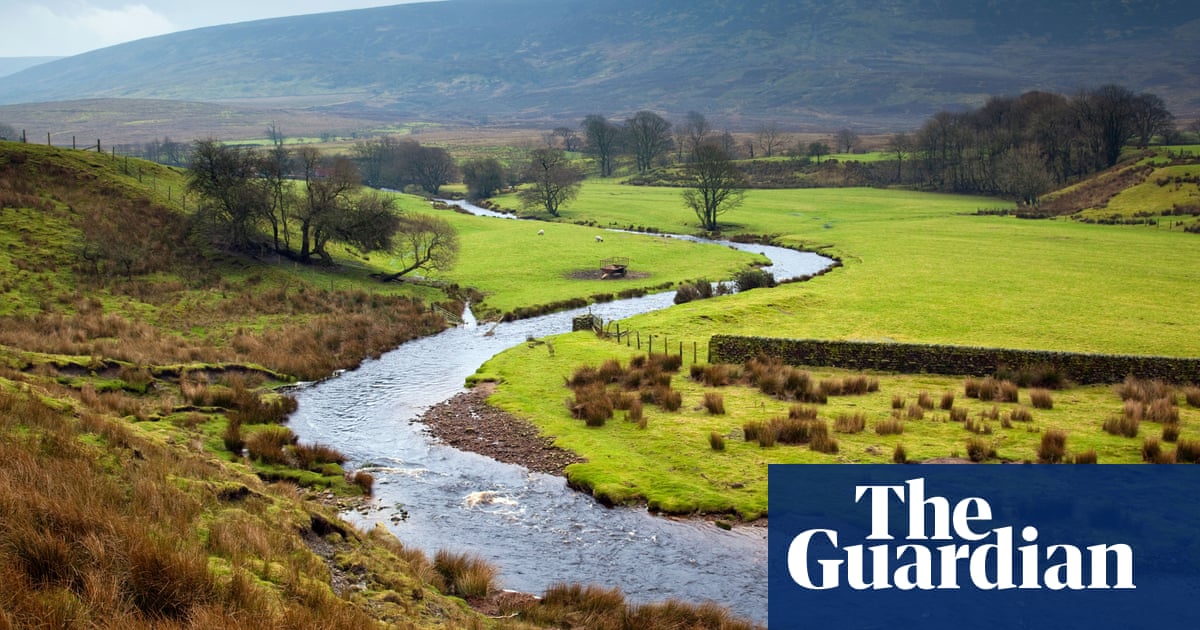
Pollutants known as “forever chemicals”, which don’t break down in the environment, build up in the body and may be toxic, have been found at high levels at thousands of sites across the UK and Europe, a major mapping project has revealed.
The map shows that per- and polyfluoroalkyl substances (PFAS), a family of about 10,000 chemicals valued for their non-stick and detergent properties, have made their way into water, soils and sediments from a wide range of consumer products, firefighting foams, waste and industrial processes.
Two PFAS have been linked to an array of health problems. PFOA has been connected with kidney and testicular cancer, thyroid disease, ulcerative colitis, high cholesterol and pregnancy-induced hypertension. PFOS has been associated with reproductive, developmental, liver, kidney, and thyroid disease. At lower levels PFAS have been associated with immunotoxicity.
The substances have been found at about 17,000 sites across the UK and Europe. Of these, PFAS have been detected at high concentrations of more than 1,000 nanograms a litre of water at about 640 sites, and above 10,000ng/l at 300 locations.
“These sorts of concentrations raise concerns with me,” said Prof Crispin Halsall, an environmental chemist at Lancaster University. “You have the risk of livestock gaining access to those waters and [then PFAS is] in the human food web.” Halsall says there are also risks involving people “accessing wildlife as food sources like fishing and wildfowl”.
The map shows that Belgium is home to the highest levels of pollution, where PFAS was found in groundwater at concentrations up to 73m ng/l around 3M’s PFAS manufacturing site in Zwijndrecht, Flanders.
People living within 15km (10 miles) of the site have been told not to eat any eggs laid in their gardens and to avoid homegrown vegetables. Meanwhile, 70,000 people living within a 5km (3 mile) radius of the plant have been offered a blood test to look for the presence of PFAS. 3M says it will remediate the site and has “signed an agreement with the Flemish region … with an investment amount of €571m” (£503m). It has also announced plans to exit PFAS manufacturing “and work to discontinue the use of PFAS across its product portfolio by the end of 2025”.
In the Netherlands, an accident involving PFAS in firefighting foam has contaminated land around Schiphol airport in Amsterdam, resulting in soils containing extremely high levels of PFOS. Some airports and military sites in Germany have been found to have similar problems.
In the UK, the highest levels of PFAS were found in a discharge from a chemicals plant on the River Wyre, above Blackpool. Fish in the river have been found to contain high levels of PFAS, with flounder containing up to 11,000ng/kg, according to data from Defra’s Centre for Environment, Fisheries and Aquaculture Science.
Prof Ian Cousins, an environmental scientist at Stockholm University, said that sites with readings above 1,000ng/kg should be “urgently assessed” so that they can be remediated.
“At [highly] contaminated sites, local authorities should consider testing to ensure that PFAS levels are safe in local produce. This would help determine if local health advisories and publication campaigns to discourage regular consumption of wild fish, shellfish, free range eggs … are needed,” he added.
Halsall said: “PFAS in groundwater is a big problem because if that groundwater is abstracted for farming, or more importantly for humans as a water source, then you’ve got PFAS in your drinking water and it’s very difficult to remove.”
The map shows that drinking water sources in the UK have been contaminated with PFAS but water companies say that the chemicals do not make it into the final tap water because it would first either be blended with another source to dilute the PFAS, or it would undergo a specialised treatment process and be removed.
Data obtained from water companies and the Environment Agency by the Guardian and Watershed shows that since 2006 about 120 samples of drinking water sources have been found to contain concentrations of PFOS or PFOA at above the 100ng/l level – the point at which the Drinking Water Inspectorate’s (DWI) guidelines state that water companies should take action to reduce it before supplying it to people’s homes. Until 2009, the DWI guideline limit was much higher, at 3,000ng/l.
The guideline limits for PFAS in drinking water are much lower in the US, where the Environmental Protection Agency has set a health advisory limit of 0.004ng/l for PFOA and 0.02ng/l for PFOS. In Denmark, the Environmental Protection Agency stipulates that drinking water must not contain more than 2ng/l for the sum of four PFASs.
Drinking water limits for PFAS continue to be brought down in response to growing evidence about their health impacts, according to Rita Loch-Caruso, a professor of toxicology at the University of Michigan. “We’re finding health effects at lower and lower concentrations – in the single digits,” she said.
Chemist and PFAS expert Roger Klein said he believes the UK’s “DWI limits are ridiculously high by current international standards”.
He also believes the practice of blending water to dilute the PFAS is wrong. “It is the lazy way out and it doesn’t remove the PFAS, which remains a problem since [they are] highly persistent and bioaccumulative.”
A Defra spokesperson said the UK had “very high standards” for drinking water and that water companies were “required to carry out regular risk assessments and sampling for PFAS to ensure the drinking water supply remains safe.
“PFAS chemicals are in the environment because they have been used widely in products and are extremely persistent. Since the 2000s we have taken action to increase monitoring and support a ban or highly restricting specific PFAS both domestically and internationally,” they said, adding that the department would continue to work with regulators to understand the risks.
Despite the large number of detections revealed by the map, it is thought to be the tip of the iceberg. The Environment Agency has admitted that PFOS – known to be toxic to fish and other aquatic life – is ubiquitous in the environment and that the presence of PFOS in rivers will mean that many will not meet water quality standards until 2039.
In the UK just PFOS and PFOA are regulated. In the EU, there is a proposal to regulate PFASs as one class, rather than to attempt to deal with each substance independently. The European Chemicals Agency says that about 4.4m tonnes of PFAS will end up in the environment over the next 30 years unless action is taken.
The Fluoropolymers Product Group (FPG) opposes the EU’s moves to treat all PFAS as one class, instead advocating differentiating between fluoropolymers and other PFAS groups, and considering the different risk profiles and uses of each group separately. “While the FPG understands the concerns related to the potential persistency of most of PFAS, we consider that this concern for the environment can be managed through alternative restrictions rather than a ban,” said Nicolas Robin, director of the FPG.
“[PFAS pollution] is similar to plastic pollution in that these chemicals are not degradable, [but] in the case of PFAS it is invisible,” said Cousins. “We continuously release them, so the levels in the environment will continue to increase and it’s only a matter of time before the levels of PFAS in the environment or in our bodies pass the threshold where there will be an effect on human health,” he said.
The Forever Pollution Project was initially developed by Le Monde (France), NDR, WDR and Süddeutsche Zeitung (Germany), RADAR Magazine and Le Scienze (Italy), The Investigative Desk and NRC (Netherlands) with the financial support of Journalismfund.eu and Investigative Journalism for Europe (IJ4EU); further investigated and published by Knack (Belgium), Denik Referendum (Czech Republic), Politiken (Denmark), YLE (Finland), Reporters United (Greece), Latvian Radio (Latvia), Datadista (Spain), SRF (Switzerland), Watershed Investigations/The Guardian (UK); and supported by Arena for Journalism in Europe for cross-border collaboration.
Some areas may appear on the map to have worse pollution problems than others but this could be a result of that region having a more rigorous monitoring regime in place, or being more willing to share data. For water concentrations, 1 ng/l is equivalent to 1ng/kg. Every effort has been made to ensure that the data, collected from a wide range of sources across the UK and Europe, is correct.












